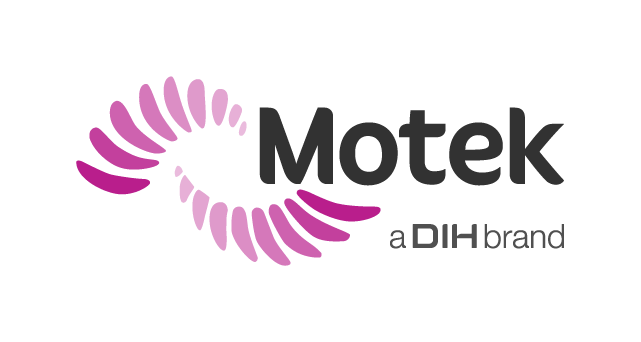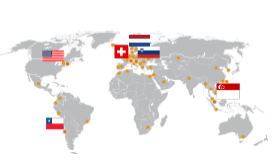November 4, 2020
Case report: Intensive therapy Using the Lokomat®, RYSEN™ and C-Mill VR+ with a Hemiplegic patient

Figure 1: team photo with Jose Lopez- Occupational Therapist and CEO of CEN (Main Author), Cristina Vazquez COO, Jorge Alegre, Loles Villalobos, Andrea Riendas, Alicia Blázquez, Sara Ortega and Elena Maraboto
Centro Europeo de Neurociencias, Madrid, Spain
We would like to share our clinical experience with a patient with a left hemiplegia.
The patient arrived in our clinic after his diagnosis of a massive haemorrhagic stroke.
We applied a tailored rehabilitation program of intensive and specialized therapy, following the continuum of therapy for gait and balance. We progressively applied the most optimal technology for each phase of recovery moving from intensive therapy with the LokomatPro to functional therapy with the RYSENTM and then to challenging therapy with the C-Mill VR+.
The patient’s experience with the intensive episode of care and improved outcomes motivated us to share how a combined program of robotic rehabilitation can be incorporated into the treatment of this patient population.
Initial Evaluation
Luismi is a 56 years old man.
He suffered a haemorrhagic stroke, staying two months in a coma and another month in the ICU.
After the coma he was diagnosed with the following functional conditions:
- Trunk control test (TCT) lower than 40
- Hip muscle strength = 0
- Severe deep sensation injury
- Neglect on left side of body, all his body weight shifted to the right side
- According to TWIST algorithm = dependent for walking
- Initial FAC = 0
- Baseline Berg Balance Scale = 4
- Wheelchair-bound, needing the help of two people to take a step
- Without active movement on his left leg, someone always needed to move his left leg in order to take a step.
The rehabilitation started six months after injury and his motivation and main goal were to walk again independently with the use of a walking aid.
Treatment with the Lokomat, Rysen™ and C-Mill VR+
- The patient accomplished one hour per day intensive gait training during the five months the therapy lasted. In the first three months, this was done exclusively with the Lokomat, the fourth month with the RYSENTM , and the fifth month by combining RYSENTM and C-Mill VR+.
- The patient started with practicing walking on the LokomatPro.
- He had one hour training per day, five days a week, for 12 weeks. This resulted in over 100 km walking in a total of 60 sessions. Day by day he became more confident about in his walking.
- The patient was able to move his left leg more and more. He also became capable of walking overground with a walking (hiking) stick and supervision and was even capable of taking some steps without the walking aid. Therefore he could start training using the RYSENTM
- As he progressed, the exercises became more challenging and complex. Therefore, the patient also started practicing gait adaptability, coordination, and dual tasks on the C-Mill VR+.
- The technological therapy was complemented with other balance, strength, and motor control exercises and functional electrical stimulation (FES).
- The total amount of therapy was four hours a day, five days a week.

Figure 2: 6 minutes walk Test evolution during 7 assessments
The initial assessment was done in November 2019, the last one in March 2020. There was a two-month period between the first and the second assessment, as the patient was unable to walk during the first two months. After that, the assessments were done approximately every two weeks.

Figure 3: 10 meter walk test evolution at normal and fast speed during 6 assessments

Figure 4: Lower limb Fugl Meyer score evolution during 3 assessments

Figure 5: Timed up and go (TUG) test evolution during 6 assessments

Figure 6: Berg balance scale evolution during 5 assessments

Image 7: Initial spatiotemporal parameters from the C- Mill

Image 8: Final spatiotemporal parameters from the C- Mill
There was a period of two weeks between the initial and final assessments, the first one was done at the beginning of March and the second in mid-March.

Image 9: Initial Butterfly representation on the C-Mill

Image 10: Last Butterfly representation on the C-Mill
There was a period of two weeks between the initial and final assessments, the first one was done at the beginning of March and the second in mid-March.
Conclusion
The objective data gathered during the different assessments allow us to conclude the following improvements:
- Walking distance increased: from not being able to walk to walking a distance of 289 meters on the 6 min walk test (Figure 2)
- Walking speed increased: from not being able to walk to 3.05 km/hour (Figure 3).
- The Fugl Meyer score for lower extremity, indicating the function of the lower extremity, increased from 7 to 18 points (Figure 4).
- The timed up and go test (TUG) decreased from 70 seconds to 16.86 seconds (Figure 5).
- The score on the Berg Balance Scale, indicating balance ability, increased from 4 to 45 points (Figure 6).
- The step length on the right side increased from 24% to 42%, because the stance time (especially single leg stance time) of the left leg increased, so better acceptance of weight on the paretic leg. Results provided by the C-Mill VR+ software (Figure 7).
- The symmetry and “normative” shape of the butterfly improved (Figure 8).
- At home, the patient recovered his independence: no walking aid was needed at home, and he used a walking (hiking) stick to walk outside
We believe that these positive outcomes were due to the intensive therapy that we could provide in our center, due to the motivation of the patient and due to the help of the family.

About us
CEN is an intensive and individualized research and therapy center which offers the latest technologies for the evaluation and treatment of neurological diseases. A team of professionals with broad international experience. eneurocenter.com/en/
This clinical experience report is meant to serve as an example of how the Lokomat®, RYSEN™ and C-Mill VR+ are integrated into one particular rehabilitation center. It is not necessarily a standard recommendation from Hocoma or Motek.


